This website uses cookies so that we can provide you with the best user experience possible. Cookie information is stored in your browser and performs functions such as recognising you when you return to our website and helping our team to understand which sections of the website you find most interesting and useful.
Top 10 Best & Worst Foods for the Environment
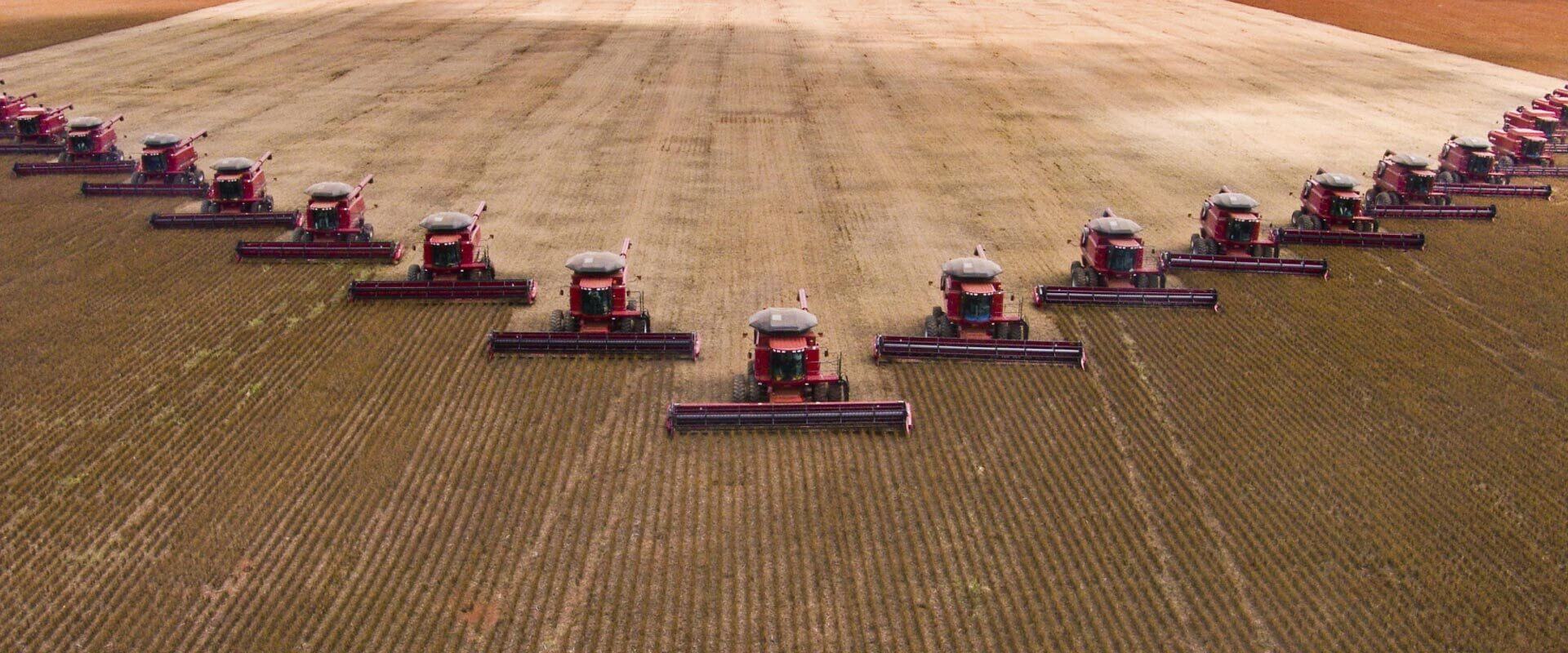
It goes without saying: reducing your carbon footprint is an important and valuable goal. Whether that comes from switching to an electric car to ditching plastic straws, every little switch helps when it comes to lowering carbon in the atmosphere of a rapidly warming Earth.
When evaluating which individual choices will have the most impact, one of the most important things you can do is carefully consider what you eat. Certain foods have very high carbon dioxide emissions, while others rank reliably low.
Some of the most common offenders on the emissions scale are meat and dairy products. Nuts and vegetables come in much lower, partially because of the animal products they can replace. Some climate researchers have said switching to plant-based diets is the single most important thing an individual can do to impact climate change.
To discover which foods have the most and least greenhouse gas emissions, we analyzed data from a recent study published in the American Association for the Enhancement of Science journal, Science. The data was collected through a comprehensive meta-analysis of 570 studies “covering 38,700 commercially viable farms in 119 countries and 40 products representing 90% of global protein and calorie consumption.”
Greenhouse gas emissions are measured in kilograms of carbon dioxide equivalents (kgCO2eq) per kilogram of food. This means non-CO2 greenhouse gases are also included in terms of their warming impact. Note some food sources of emissions may be negative. For example, nuts emit -2.05kg emissions as a result of land use. The data defines land use as the equivalent greenhouse gas emissions for the total space or land that is used for farming processes.
#10 (highest): Soybean oil
Total greenhouse gas emission (per kg of food): 7.28 kg
#1 source: Feed (2.94 kg)
#2 source: Farming (1.69 kg)
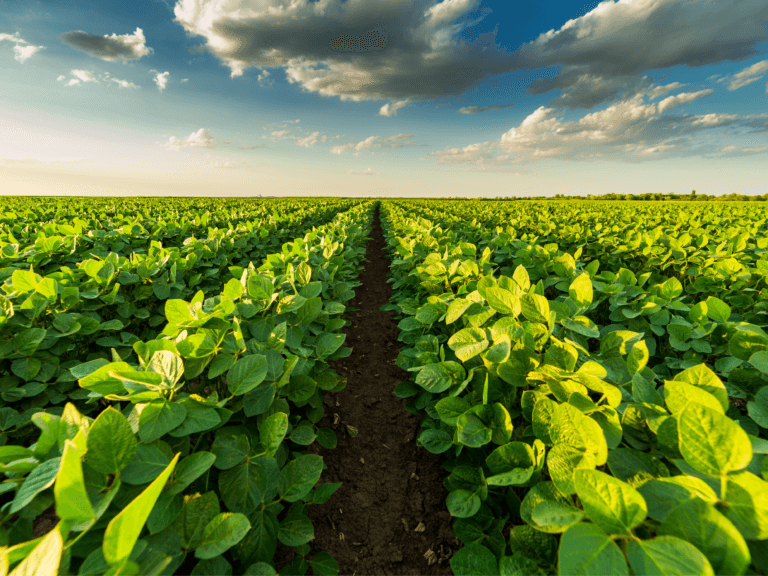
Canva
Deforestation is one of the primary ways in which soybean oil generates greenhouse gases. Forests are cleared around the world to create space for fields to grow soybeans, which means there is less forest available to take carbon out of the atmosphere. Soy is also often harvested and produced mechanically, which adds to its carbon footprint.
It’s important to note one positive facet of soy growth: eating a plant-based diet, which often features soy in place of animal products, benefits the environment far more than growing soy harms it.
#9 (highest): Pork
Total greenhouse gas emission (per kg of food): 7.28 kg
#1 source: Feed (2.94 kg)
#2 source: Farming (1.69 kg)
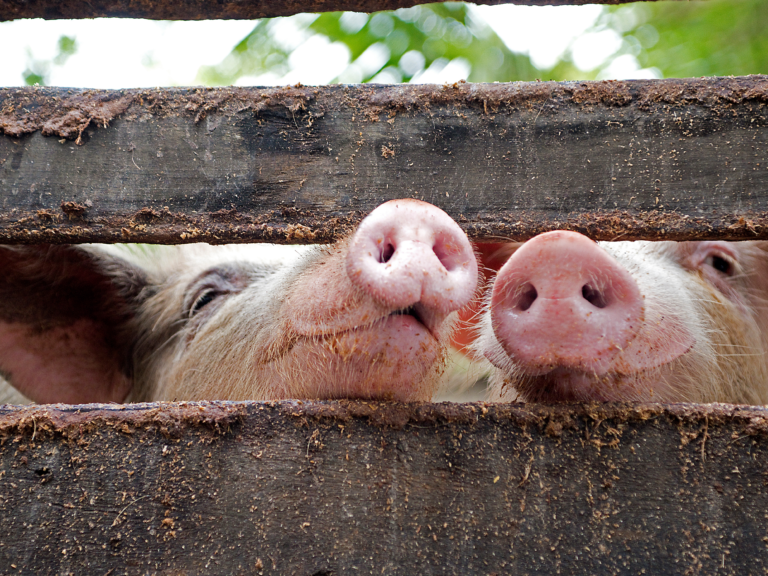
Canva
While pig farming might not seem very energy-intensive, there’s a sneaky culprit behind its high carbon footprint. The methane pigs produce as part of digestion contributes significantly to their greenhouse gas emissions. Manure management also plays a role.
The energy required to work with all the manure generated by the animals also releases carbon into the atmosphere. The way manure is managed—for example, how toxic the excretion is, how the manure is housed on farms, etc.—also contributes to pork’s gas emissions and varies by pig farm. Streamlining manure management is one way to potentially reduce the number of greenhouse gases associated with pork.
#8 (highest): Palm oil
Total greenhouse gas emission (per kg of food): 7.61 kg
#1 source: Land use (3.10 kg)
#2 source: Farming (2.11 kg)
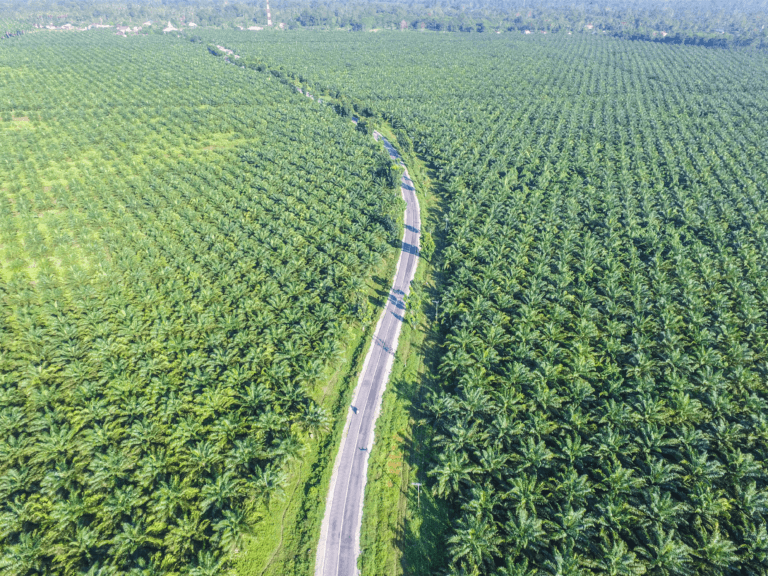
Canva
Palm oil is an inexpensive oil used in food, cosmetics, and biofuels with a high carbon footprint. But an interesting caveat applies to palm oil’s impact on greenhouse gas production. Studies have found that new palm oil plantations have twice the emissions of mature ones.
This is partly because of what is required to cultivate new plantations. The habitats that are often cleared for the production of palm oil are carbon-sucking forests. Their absence increases the negative environmental impact of establishing these new palm oil plantations.
#7 (highest): Crustaceans (farmed)
Total greenhouse gas emission (per kg of food): 11.85 kg
#1 source: Farming (8.38 kg)
#2 source: Feed (2.51 kg)

Canva
The primary factor that determines the carbon impact of seafood is fuel. Large boats traveling long distances to catch non-local fish leave a higher carbon footprint than smaller boats going out for local catches.
How the fish is processed also plays a role. Fish sent to a faraway destination for processing and then shipped to be sold releases more greenhouse gases. Seafood with the lowest carbon footprint tends to be species that are typically harvested manually, such as clams.
#6 (highest): Coffee
Total greenhouse gas emission (per kg of food): 16.48 kg
#1 source: Farming (10.39 kg)
#2 source: Land use (3.69 kg)
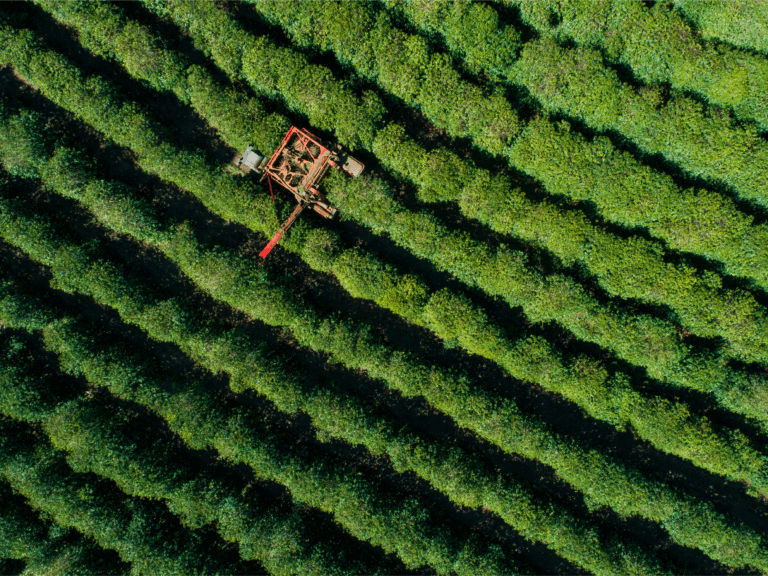
Canva
Transportation is one of the major ways that coffee has a negative impact on the environment. Many countries that grow coffee beans are location far away from high-consumption markets like the United States. Brazil and Vietnam, for example, are two of the top coffee-producing nations.
The fuel required to transport coffee beans to markets further afield has a major carbon impact. Another culprit? The land that is deforested to grow coffee beans contributes to a higher carbon footprint.
#5 (highest): Dark chocolate
Total greenhouse gas emission (per kg of food): 18.68 kg
#1 source: Land use (14.31 kg)
#2 source: Farming (3.71 kg)
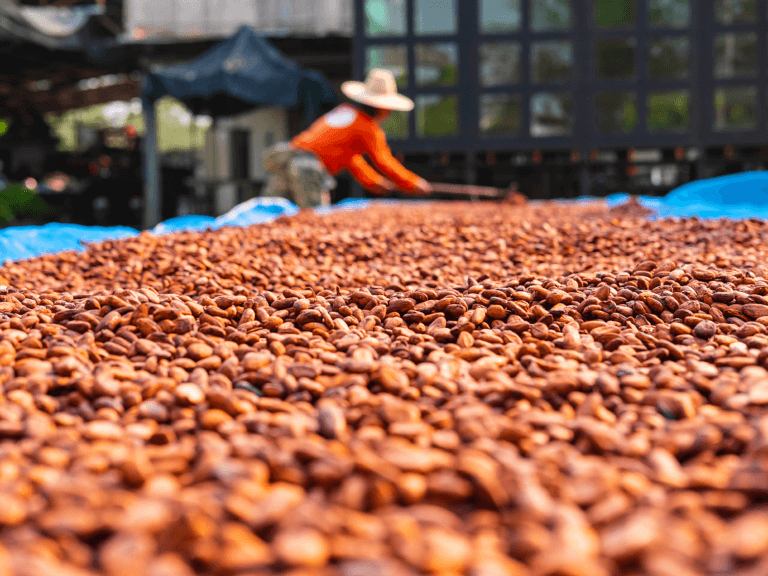
Canva
Two of the major reasons chocolate production has a negative impact on the environment are milk and cocoa. These two key ingredients are the foundation of chocolate making. Milk and cocoa both have high carbon footprints from the methane produced by cows and the deforestation that occurs to plant cocoa. Palm oil is another ingredient used for chocolate production that’s hard to square with concern for the climate because of its contribution to deforestation.
#4 (highest): Bovine meat (dairy herd)
Total greenhouse gas emission (per kg of food): 21.09 kg
#1 source: Farming (15.69 kg)
#2 source: Feed (2.51 kg)
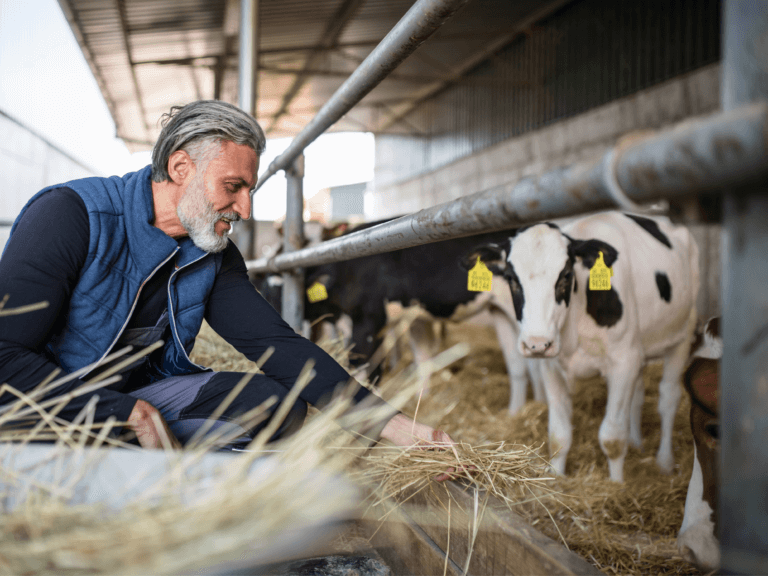
Canva
Bovine meat contributes to greenhouse gases much like pig meat does. Methane is produced as part of digestion in the farming of these animals. “Bovine” meat encompasses not just cows, but buffalo and bison meat as well. Each year, a single cow will belch 220 pounds of methane.
Studies have found that methane from cows is shorter-lived than carbon dioxide, yet far more potent in warming the atmosphere. Climate activists have long argued that reducing dairy consumption—particularly milk produced by cows—is key to halting global warming.
#3 (highest): Cheese
Total greenhouse gas emission (per kg of food): 21.24 kg
#1 source: Farming (13.06 kg)
#2 source: Land use (4.46 kg)
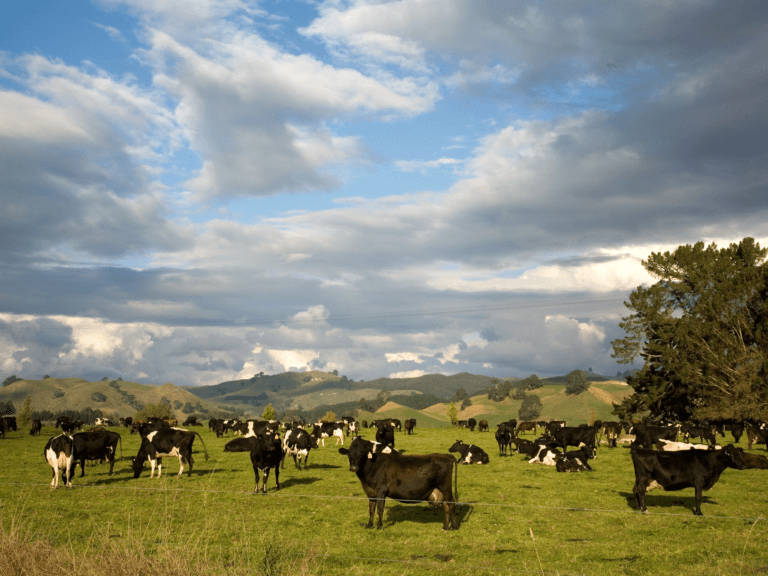
Canva
What’s one reason cheese is high on the list of carbon producers? Cows. Yes, the same cows responsible for those 220 pounds of methane belched a year. Milk is one of the primary ingredients in cheese and, consequently, cheesemaking generates a significant amount of carbon.
#2 (highest): Lamb and mutton
Total greenhouse gas emission (per kg of food): 24.42 kg
#1 source: Farming (19.51 kg)
#2 source: Feed (2.37 kg)
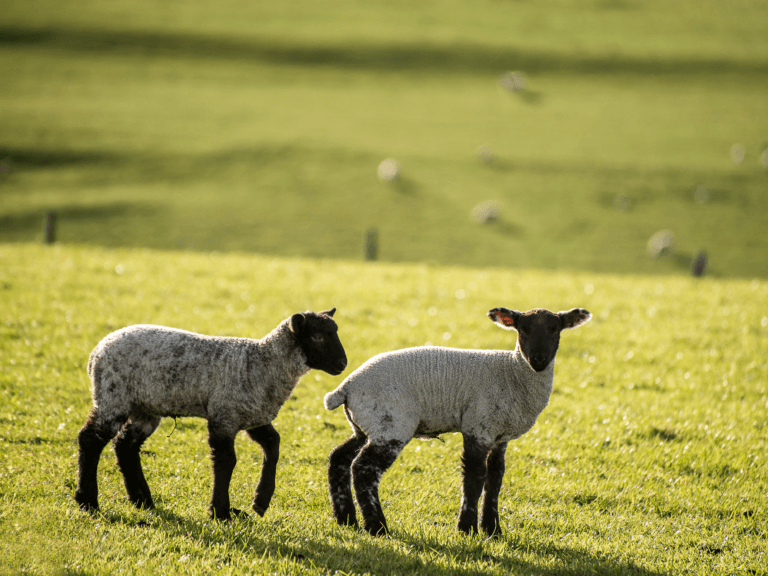
Canva
Lamb and mutton—the meat of a ram or ewe—have a surprising carbon impact relative to beef. Although their overall methane production and feed requirements are similar, lamb has a higher impact because less of the whole animal is traditionally consumed relative to beef. However, only around 1% of Americans eat lamb regularly. This means that lamb does not contribute significantly to greenhouse gas emissions in the United States as significantly as in other parts of the world where lamb is consumed more regularly.
#1 (highest): Bovine meat (beef herd)
Total greenhouse gas emission (per kg of food): 59.57 kg
#1 source: Farming (39.39 kg)
#2 source: Land use (16.28 kg)
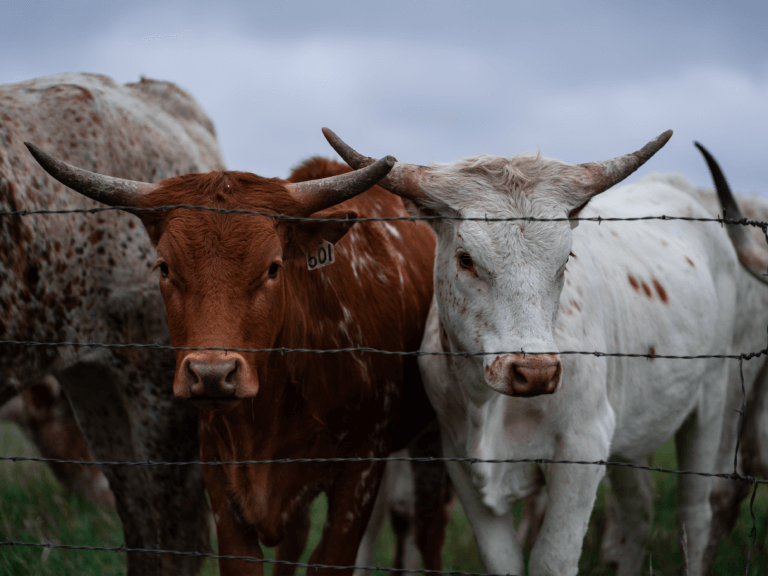
Canva
Beef has the highest carbon footprint of any food. This is because of what is required to raise and farm cattle. Animals used for beef production require a tremendous amount of feed, which must be grown on its own. They also produce an extremely high amount of methane.
Climate scientists often urge those who don’t want to become vegan to consider switching to vegetarianism or eliminate red meat from their diets. These recommendations underscore how much bovine meat contributes to environmental damage.
#10 (lowest): Soy milk
Total greenhouse gas emission (per kg of food): 0.91 kg
#1 source: Retail (0.27 kg)
#2 source: Land use (0.18 kg)
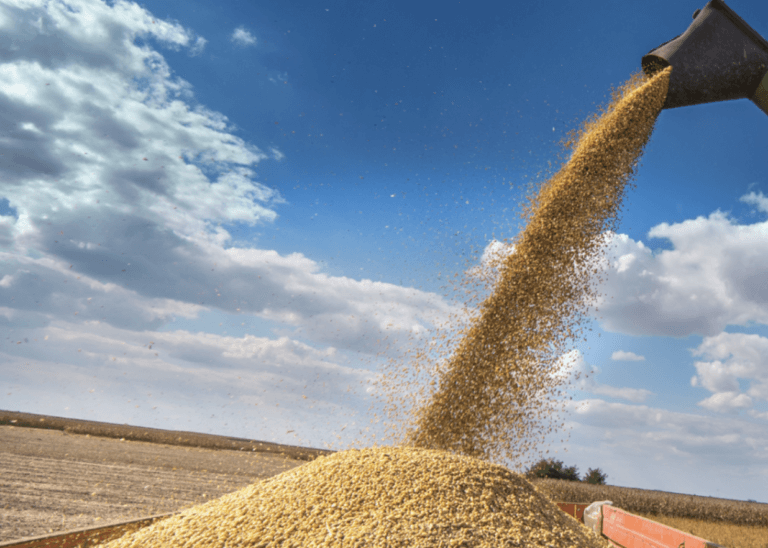
Canva
One of soy milk’s biggest benefits to the environment is what it can be used as a substitute for. Those looking to make the switch away from cow’s milk can opt for soy milk instead. The land footprint required to produce cow’s milk far outstrips that for soy. Soy can also be used for other purposes, meaning that less will be wasted. Among these other purposes? Feed for livestock.
#9 (lowest): Peas
Total greenhouse gas emission (per kg of food): 0.90 kg
#1 source: Farming (0.72 kg)
#2 source: Transport (0.10 kg)
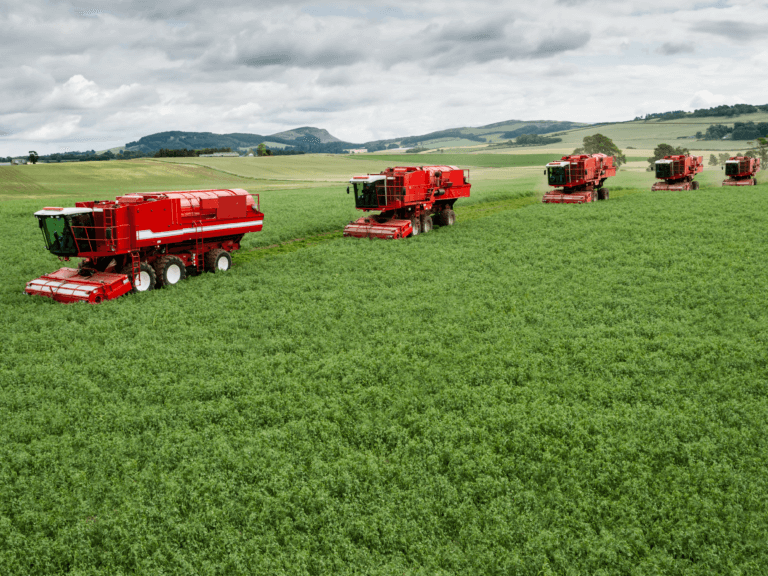
Canva
The carbon footprint of peas is almost 50 times lower than what goes into a beef hamburger. Peas can also be used in a variety of surprising swaps. One such swap is—you guessed it—milk, as pea milk has become an alternative for those looking to go non-dairy. And when cocktail hour comes around, peas become a substitute as well. Gin is traditionally produced with wheat, which has a high carbon footprint, but it can also be made with peas.
#8 (lowest): Bananas
Total greenhouse gas emission (per kg of food): 0.68 kg
#1 source: Transport (0.29 kg)
#2 source: Farming (0.27 kg)
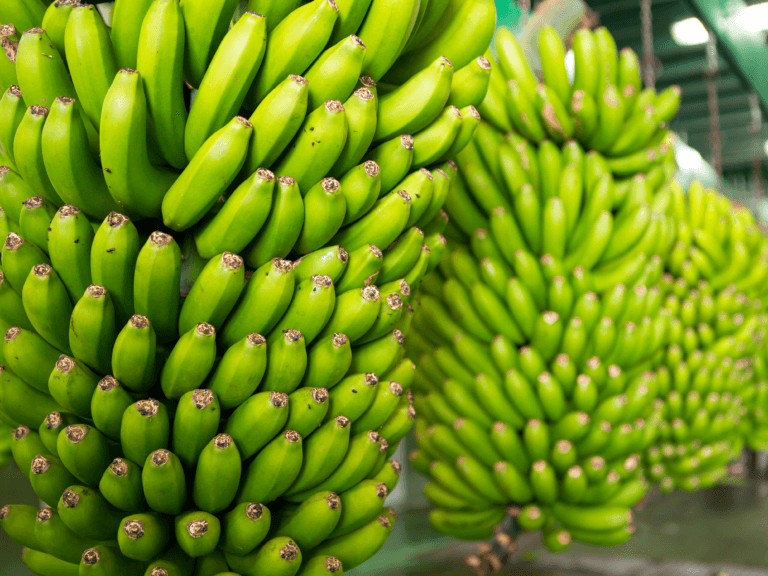
Canva
Bananas are carbon-friendly fruits for a number of reasons, including the fact they grow in direct sunlight. Bananas are not required to be grown in hothouses, which use a tremendous amount of energy. They also keep and store well and maintain their quality during transport. This means instead of flying them to their destinations, bananas can often be shipped by boat, which dramatically decreases their carbon footprint.
#7 (lowest): Brassicas
Total greenhouse gas emission (per kg of food): 0.44 kg
#1 source: Farming (0.28 kg)
#2 source: Transport (0.10 kg)
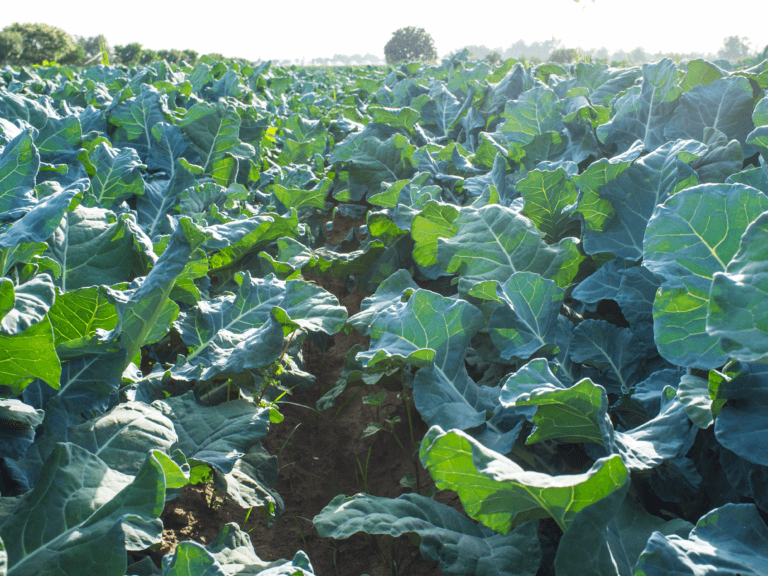
Canva
Brassicas are a category of food that includes broccoli, brussels sprouts, and cauliflower. Why are they relatively low in carbon emissions? It’s because only some of the plant is used. Parts of the biomass of brassica vegetables are not harvested and are returned to the earth—essentially composted. This reduces their overall carbon load, as the returned parts of the vegetable integrate back into the soil for the benefit of future harvests.
#6 (lowest): Onions and leeks
Total greenhouse gas emission (per kg of food): 0.40 kg
#1 source: Farming (0.21 kg)
#2 source: Transport (0.10 kg)
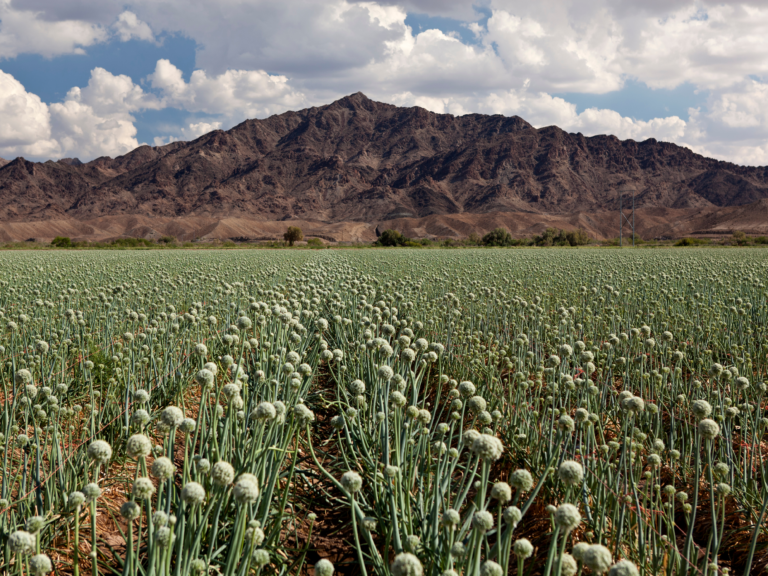
Canva
Onions have some of the lowest carbon emissions of any vegetable, as do leeks, their close cousins. So long as organic methods are used, the impact of growing onions is negligible. This is because they don’t damage the air, water, or require deforestation for growing. The same can be said for leeks.
#5 (lowest): Potatoes
Total greenhouse gas emission (per kg of food): 0.37 kg
#1 source: Farming (0.19 kg)
#2 source: Transport (0.09 kg)
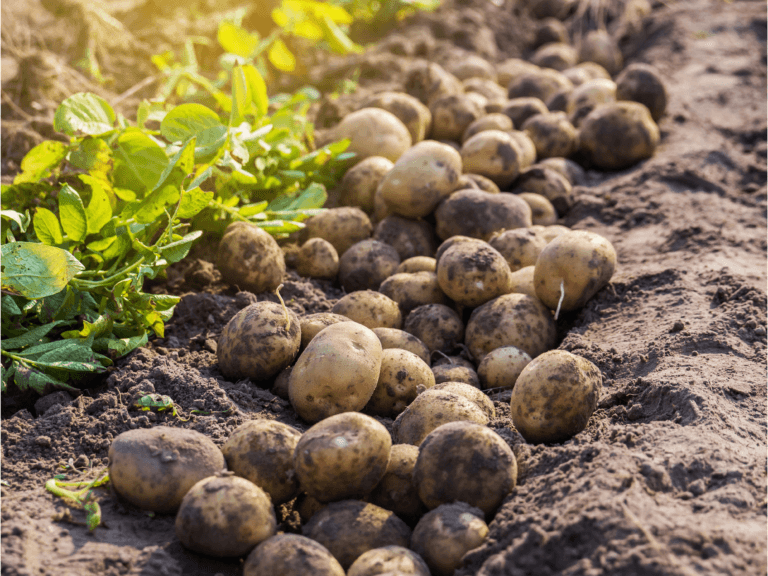
Canva
Most of the carbon emissions from potatoes come from how they are cooked. For example, potatoes that are fried have a lower carbon footprint than those that are baked, since baking takes more time and therefore requires more energy. In some countries, particularly where french fries and the like are relatively common, these less carbon-intensive ways of cooking lead to lower overall emissions.
#4 (lowest): Root vegetables
Total greenhouse gas emission (per kg of food): 0.37 kg
#1 source: Farming (0.15 kg)
#2 source: Transport (0.11 kg)
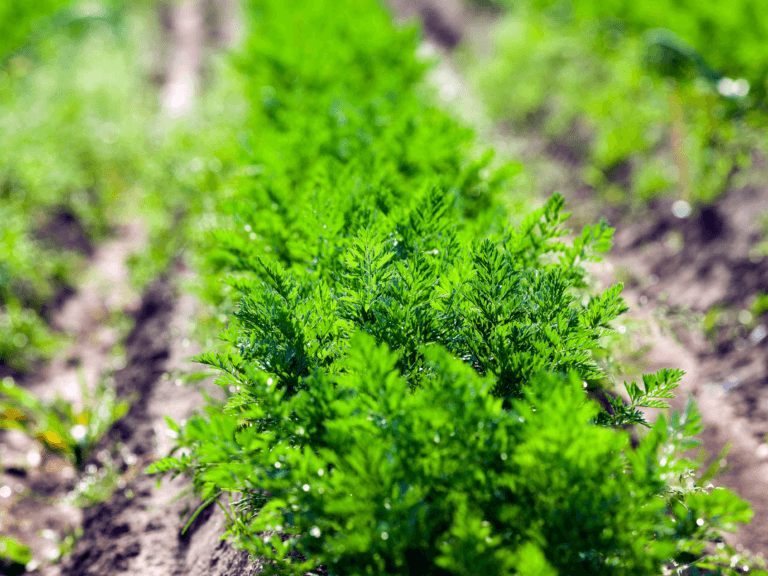
Canva
Root vegetables include tubers such as carrots and turnips. They have such a low carbon impact that researchers are turning to root vegetables for surprising uses. These include potentially using them to make cement. Cement has a high carbon footprint because it is so labor-intensive to produce. Researchers are exploring whether root vegetables—along with plastic containers—could be used to make eco-friendly concrete.
#3 (lowest): Apples
Total greenhouse gas emission (per kg of food): 0.36 kg
#1 source: Farming (0.23 kg)
#2 source: Transport (0.10 kg)
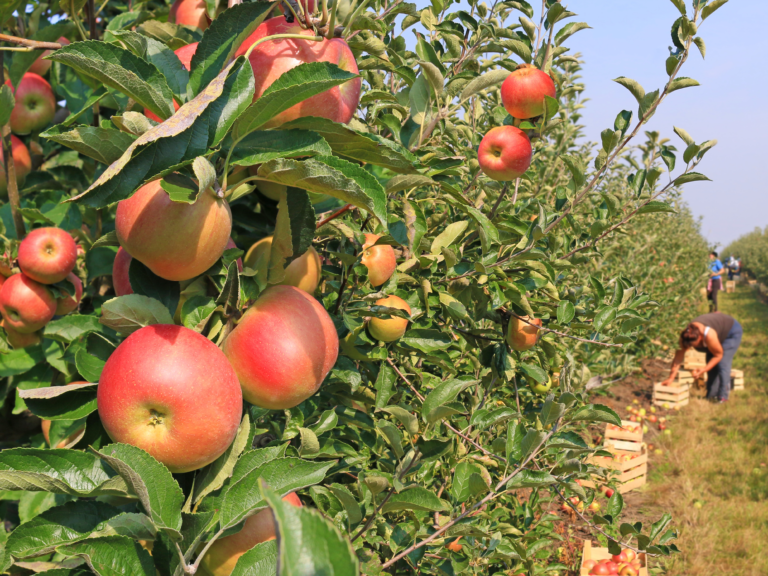
Canva
When grown locally in season, an apple has quite a low carbon footprint. This is because apples are grown on trees. Trees draw carbon in from the environment, reducing overall carbon in the atmosphere. And harvesting apples is as simple—and pleasurable—as picking them off a tree. Very little waste is involved, which is part of its low carbon impact.
#2 (lowest): Citrus fruit
Total greenhouse gas emission (per kg of food): 0.32 kg
#1 source: Farming (0.31 kg)
#2 source: Transport (0.09 kg)
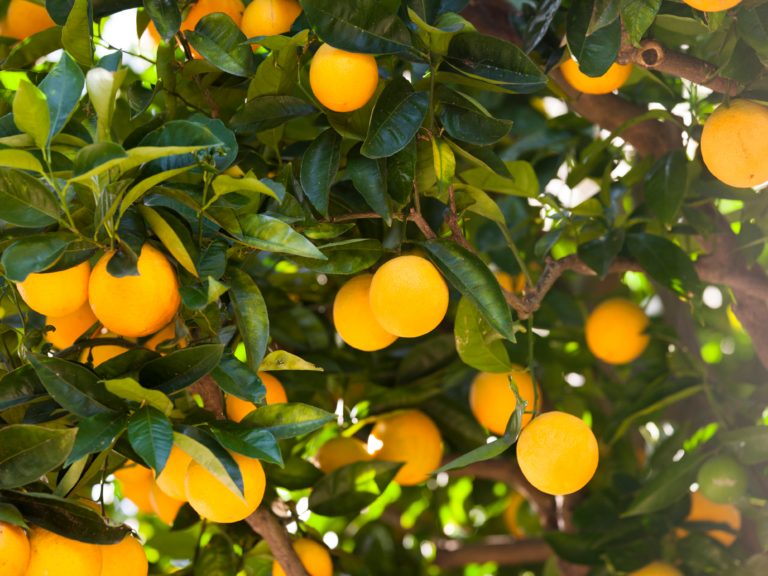
Canva
Much like apples, citrus fruits are grown on trees and are simply harvested, thus having a lower carbon footprint. One of the key caveats depends on what is done with the fruits after they are picked. If they are turned into fruit juice, the type of packaging, particularly plastic, will impact the overall carbon footprint.
#1 (lowest): Nuts
Total greenhouse gas emission (per kg of food): 0.28 kg
#1 source: Farming (2.13 kg)
#2 source: Packaging (0.08 kg)
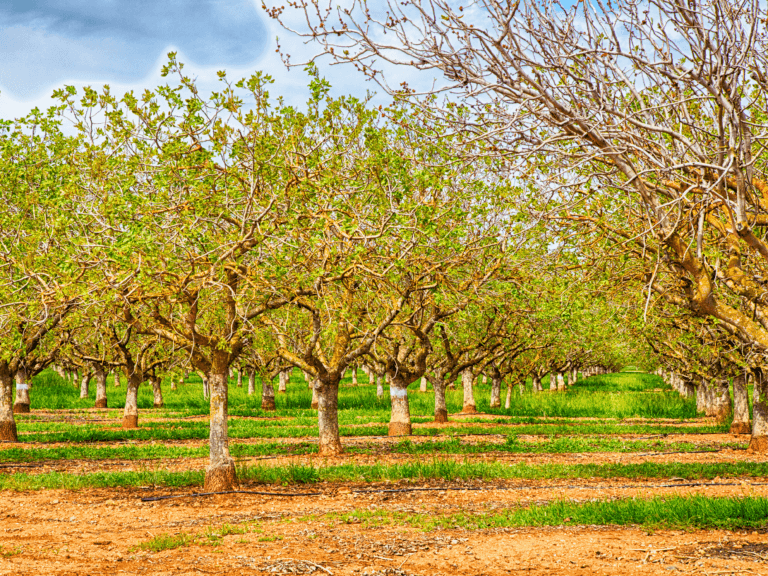
Canva
Topping the list of most environmentally friendly foods based on greenhouse gas emissions is nuts. One of the primary reasons nuts have a low carbon footprint is, like soy, because of what they replace. Nuts can be substituted for a variety of dairy products. For instance, almond and cashew milk can be used to replace cow’s milk, which has a very high carbon footprint.
Nuts are also making inroads into cheese production. Cashew cheese, for example, can be used instead of milk in the production of cheese. All nuts are not created the same, however, and some are more carbon footprint friendly depending on how they are grown, and how they are packaged and processed for consumers.
About 71% of carbon emissions contributing to climate change come from large corporations, yet individuals still play a key role in keeping the planet safe. The average American family of four emits more carbon dioxide with regular meat consumption than by driving two cars.
In addition to dietary changes, consumers can push these corporations responsible for the majority of emissions to improve their practices. Ask your local grocery store if they use any of the smart grocery technology designed to make the places we purchase our food more sustainable. Every conscious act makes a difference for the planet, no matter how small, and together we can accelerate positive change.
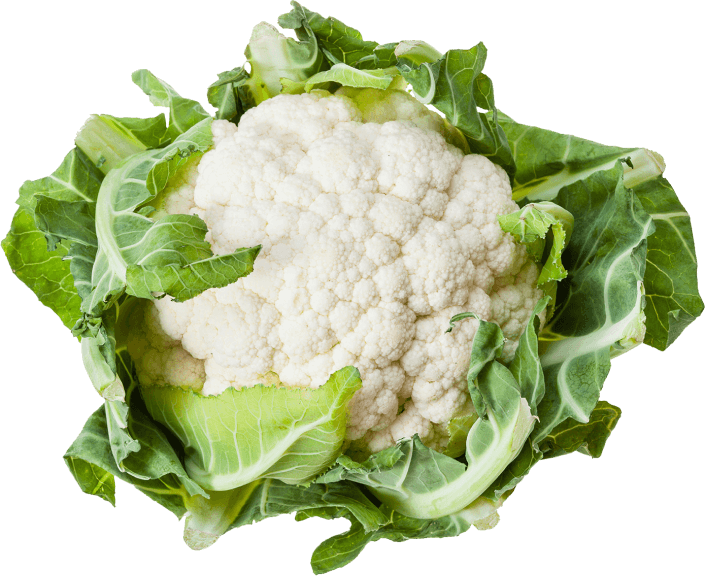
Fresh, delivered.
from the Shelf Engine team.
By providing your email, you agree to the Shelf Engine Privacy Policy.




